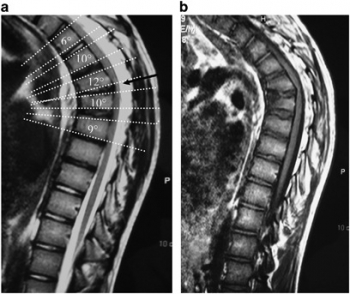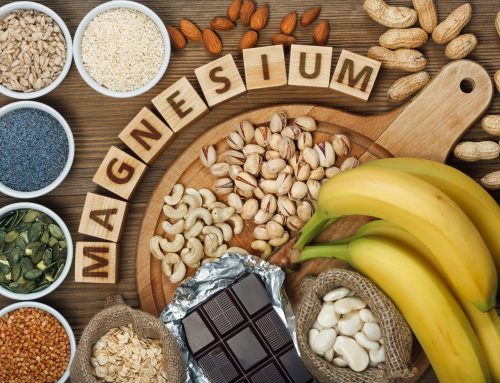Scheuermann’s Disease (SD) is a relatively common developmental disorder of the thoracic spine. Most commonly presenting in teenage males, it is characterised by an increased kyphosis, or “hunched back” due to the abnormal growth of the vertebrae. The cause of this disease is essentially unknown but gender, familial tendencies and biomechanical factors are thought to play a role.
During Scheuermann’s disease, the posterior aspect of the vertebrae grows normally while the anterior (front) aspect grows slowly. This creates a wedging of the thoracic spine. It is this wedging of the spine that creates an increased kyphosis, with the apex of the curve usually between T7 and T9 vertebra.
In addition to the wedged vertebrae, there is an abnormal growth at the interface between the disc and the vertebrae, known as the endplate. These thin plate like structures join the disc to the vertebrae. During the development of SD, it is believed that small parts of the disc protrude into the endplate creating Schmorl’s nodes. These nodes are characteristic of SD and are typically diagnosed from plain X-rays.
Scheuermann’s disease does not spread and is not really a “disease” but a condition that can arise during growth. It is more common in males and appears in adolescents usually towards the end of their growth spurt.
If the round back deformity is severe, patients are more likely to have discomfort or pain along with the deformity as they age.
Treatment and Management
People with SD commonly present with pain around the mid back, which is not debilitating but more a constant ache and can be aggravated by activity. Pain is usually the reason for seeking treatment in our clinic, but in truth this pain is actually the last symptom to develop and should be the first treatment to improve.
There are several phases to treatment of Scheuermann’s Disease:
Phase 1: Pain relief and inflammation
The aim of treatment is to reduce inflammation around the areas of involvement using ice therapy, massage and muscle release techniques and rest to help de-load the thoracic spine.
Phase 2: Restoring normal movement
Once the pain and inflammation has settled your chiropractor will focus on restoring movement to the segments of the spine that are restricted by performing specific spinal adjustments. This will help to regain thoracic extension, which is most commonly affected with SD. There are specific thoracic extension exercises that will help to gain full thoracic range of movement as well as specific stretches of the pectorals, shoulder girdle and the neck which will help regain proper movement.
Phase 3: Maintaining full Range of movement and preventing dysfunction
People with SD can return to sports and activity once given the OK from your chiropractor, but maintaining full range of movement is ideal to prevent reinjures. This can be done by performing core exercises and stretches given to you by your chiropractor and by having regular check ups to maintain the function of the thoracic spine. The schmorls nodes and wedged vertebrae that develop during SD unfortunately do not go away, so maintaining proper thoracic and full spine function is key for this condition.
If you suspect you or someone you know has this condition, or you have any questions relating to treatment or exercises for Scheuermann’s Disease, please don’t hesitate to contact us at Neurohealth Chiropractic.
If you would like more information or would like to book an appointment at Neurohealth Chiropractic – please call the clinic on 9905 9099 or email us admin@neurohealthchiro.com.au or fill in the contact form from our website www.neurohealthchiro.com.au
Sign up to receive Neurohealth Chiropractic’s Free monthly health newsletter on the Right Hand Side of this page. Filled with great information and lots of easy health tips to keep you at Optimal Health!




